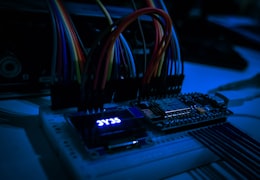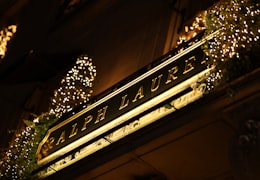This is a BIGGER DEAL Than Tariffs

In recent weeks, a major topic of discussion among traders and investors is about trade deals and the state of the market.
It’s fair to say that these issues have dwarfed the other opportunities and risks that were on the minds of investors, prior to ‘Liberation Day’.
Smartphone Analogue
It reminds me of the 2007-2009 period, and what happened with smartphones.
The iPhone was first introduced in June 2007. As expected, Apple’s (NASDAQ: AAPL) stock enjoyed a spectacular rally as investors became excited about its prospects.
The stock had rallied by 45% in the weeks leading up to the announcement and then tacked on another 50% in the ensuing months.
Yet, the exuberance and Apple’s stock came to a crashing halt as the financial crisis began to spread throughout the economy. And, it eventually infected Apple as its stock declined by more than 60% from its high in 2007 to its low in 2009.
In hindsight, it’s clear that not even a once-in-a-century financial crisis could affect the inevitability of smartphones becoming ubiquitous. And, the financial crisis provided a rare opportunity to acquire Apple with lower risk and at lower prices.
Apple went on to be a major market leader, and the stock is up by more than 6,800% since its 2009 low.
A note from our sponsors...
How to Become Your Own Bank (And Earn 30-400% Annually) A former Wall Street insider with a CFA Charter is showing crypto investors how to "become their own bank". This select group is using the same liquidity strategy BlackRock uses to dominate traditional markets... except in crypto where returns are exponentially higher. This allows them to generate income regardless of market direction. Regular investors are already earning up to triple-digit annual returns. Click here for the free training to learn how you can earn an extra 30-400% on your digital assets.
Electricity is the New Oil
I believe that investors may be missing out on another major, secular opportunity due to current tariff uncertainty and headline risk.
Electricity demand is rapidly increasing due to AI, electric vehicles, newer heating and cooling systems, reshoring of critical industries, and data centers. By 2030, electricity demand in the US is projected to increase by 25% which would require an additional 38 gigawatts to meet peak demand needs. This is equivalent to California’s current capacity for producing electricity.
Meanwhile, the utility sector is completely unprepared to meet this moment. Over the last two decades, growth in electricity demand has been flat. This has led to significant consolidation in the sector and underinvestment in capital expenditures. Thus, trillions will have to be spent on these efforts in the coming years in order to upgrade infrastructure and generate increased levels of electricity.
In fact, increasing electricity production may be one of the few areas of agreement for conservatives and liberals. For Democrats, more electricity is integral to the battle against climate change and reducing emissions. For Republicans, the project is essential to re-shoring critical industries and boosting manufacturing.
2 Stocks to Consider
A major factor in this electrification trend is the boom in AI and data centers. Emcor (NYSE: EME) manufactures advanced fiber-optic and photonic products that are essential for efficient data transmission. The data center boom is in its infancy, yet, EME’s EPS has climbed from $7 to $26 over the last 5 years.
The stock is also quite cheap with a forward P/E of 18, and earnings expectations that have been hiked for the last 11 quarters. EME is also part of the Zen Investor portfolio. Each stock in the Zen Investor portfolio is hand-picked by 40+ year market veteran Steve Reitmeister, who uses a rigorous 4-step screening process to locate the highest-potential stocks. Click here to check out other stocks in the Zen Investor portfolio.
KBR (NYSE: KBR) is a global leader in engineering and construction consulting services. Engineering companies will also benefit from this secular trend, yet KBR stands out due to its expertise in these types of large-scale projects. KBR is a leader in designing and building data centers, grid resilience initiatives, power-generation projects, and working with the government on major industrial projects.
KBR is also highly rated by the Zen Ratings with a Strong Buy (A) rating. A-rated stocks have produced an average annual return of 32.5% which outpaces the S&P 500’s average annual gain of 10.8%.
Conclusion
The best investments are riding unstoppable trends. Yes, market tantrums and uncertainty can affect them in the short-term but won’t derail their destiny.
Increasing electricity needs are one such trend. Investors should seize this opportunity and consider high-quality stocks like EME and KBR that are well-positioned to reap the rewards.
What to Do Next?
Want to get in touch? Email us at news@wallstreetzen.com.
Keep Reading
See All News




Company
AboutNewsBlogStock Investing FAQPlansPrivacy PolicyTerms of ServiceCancellation & RefundsPerformanceHelp GuidesContactTwitterYouTubeNewsletterInformation is provided 'as-is' and solely for informational purposes and is not advice. WallStreetZen does not bear any responsibility for any losses or damage that may occur as a result of reliance on this data.

